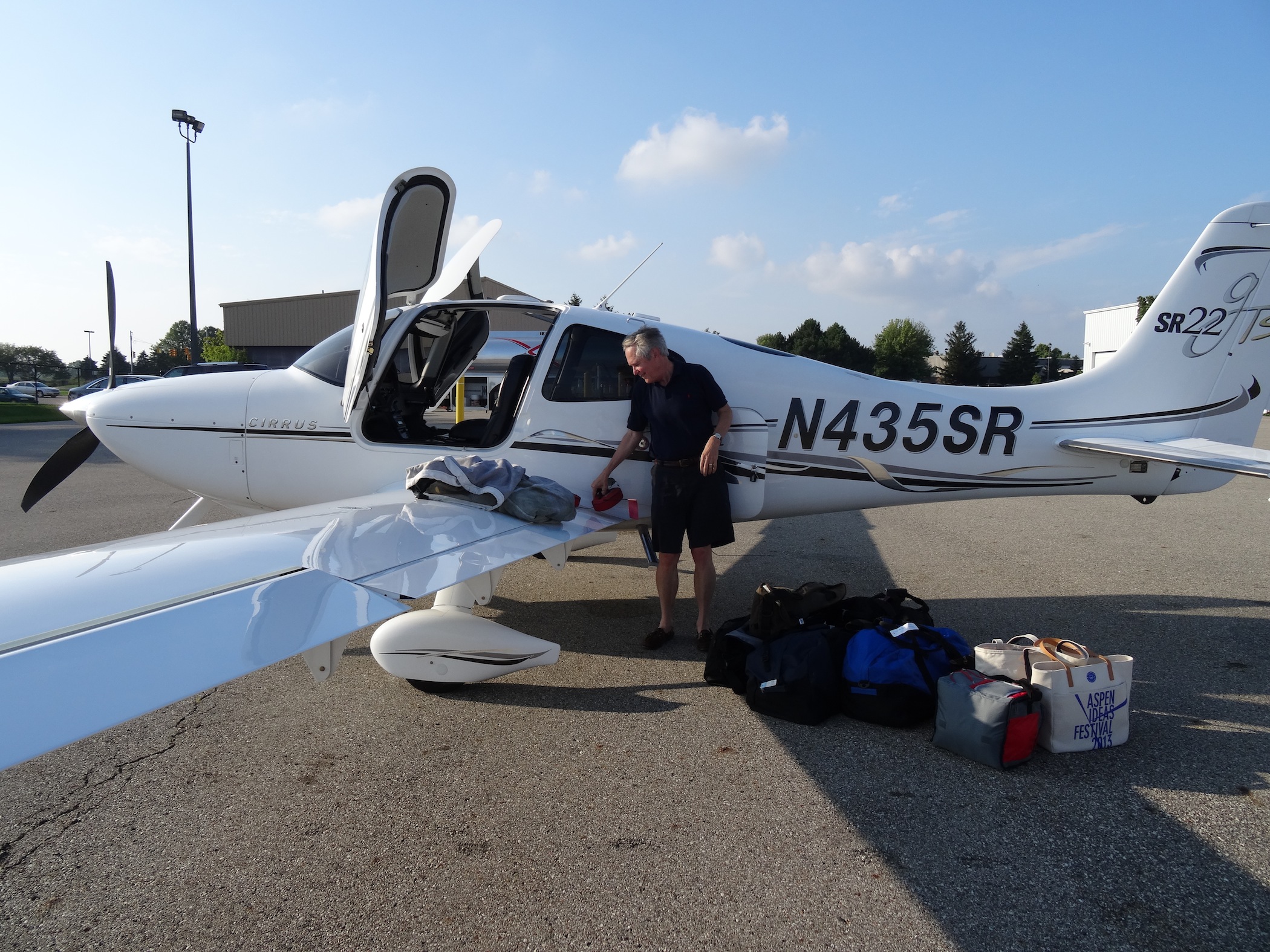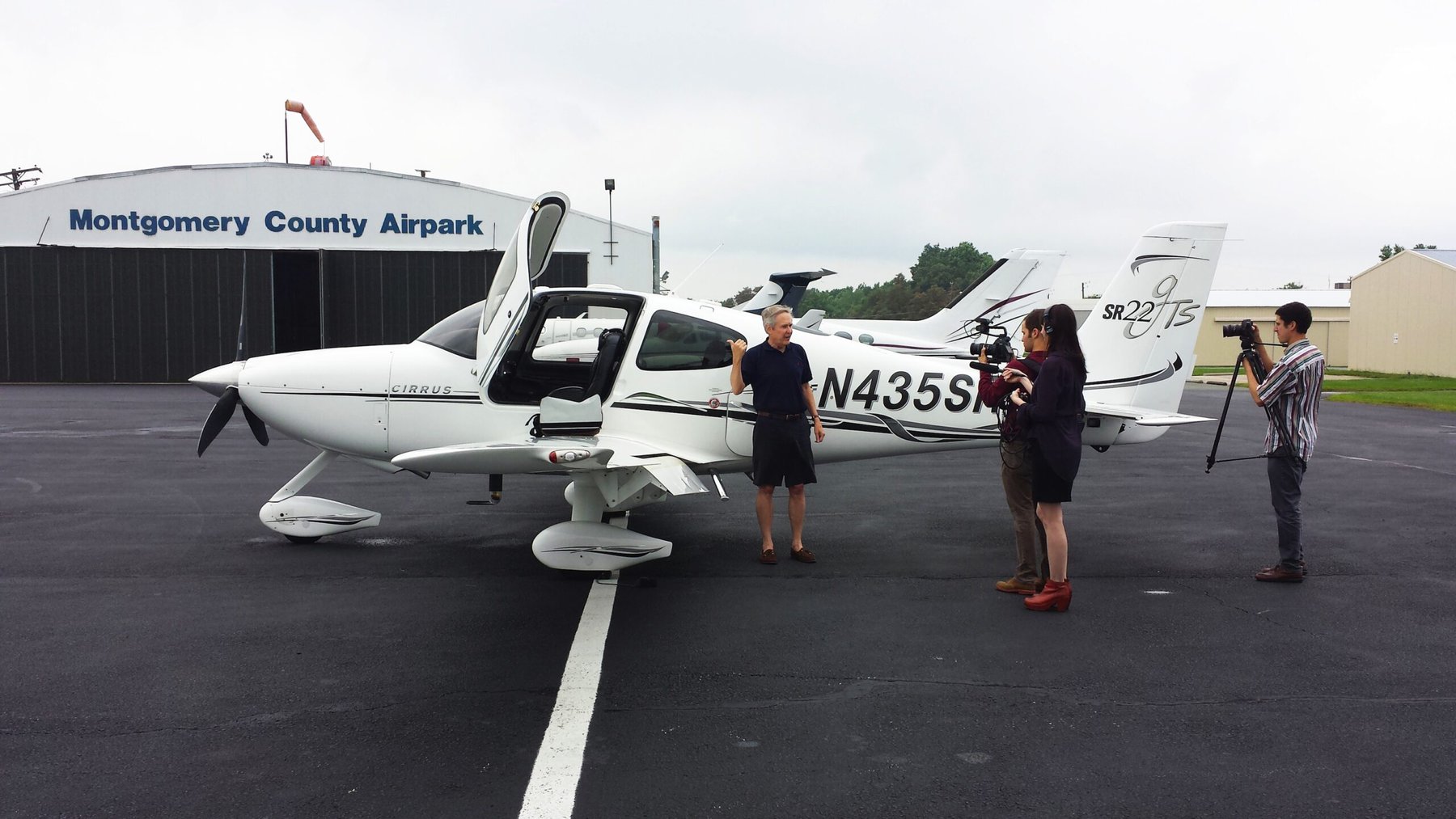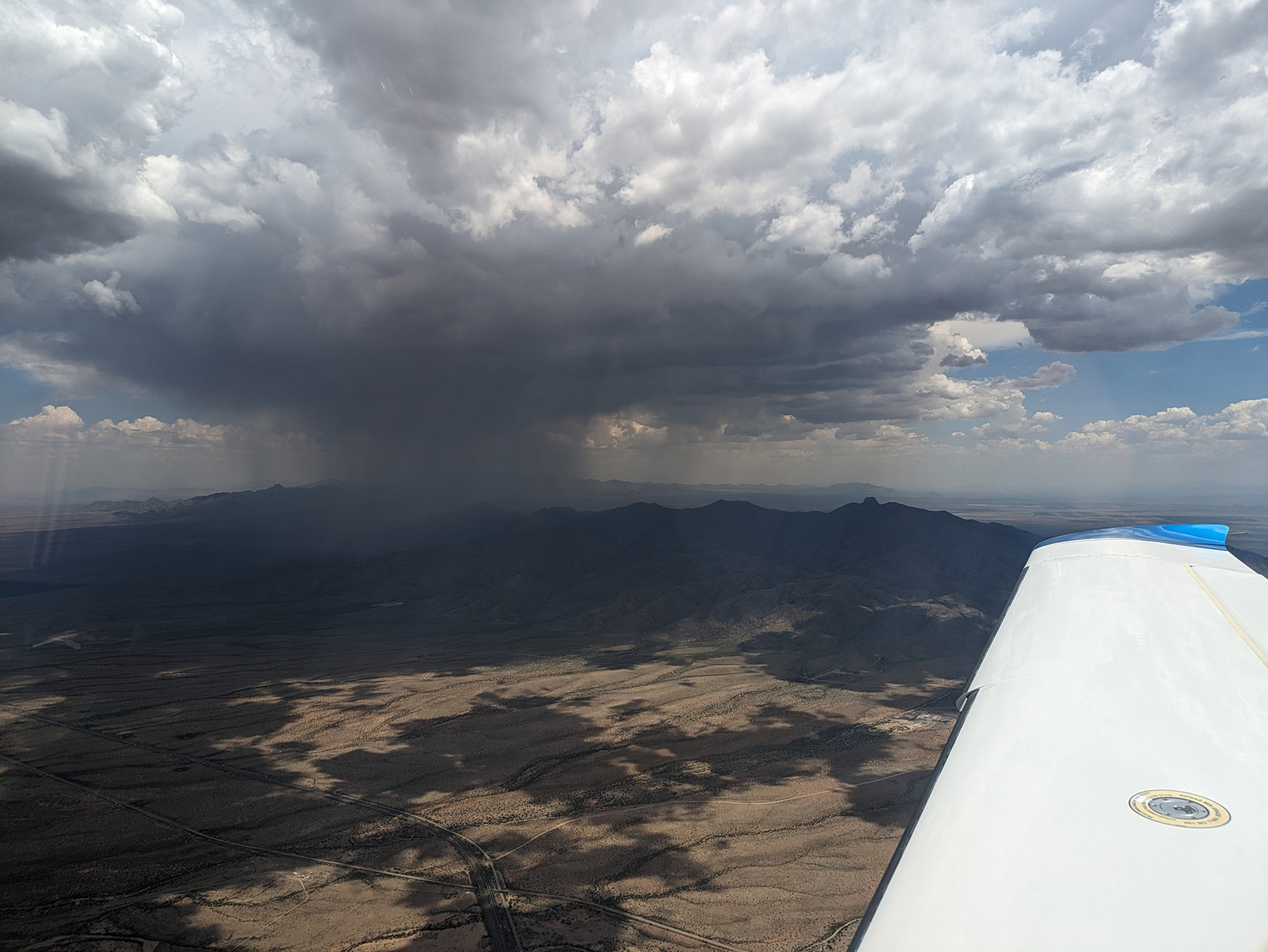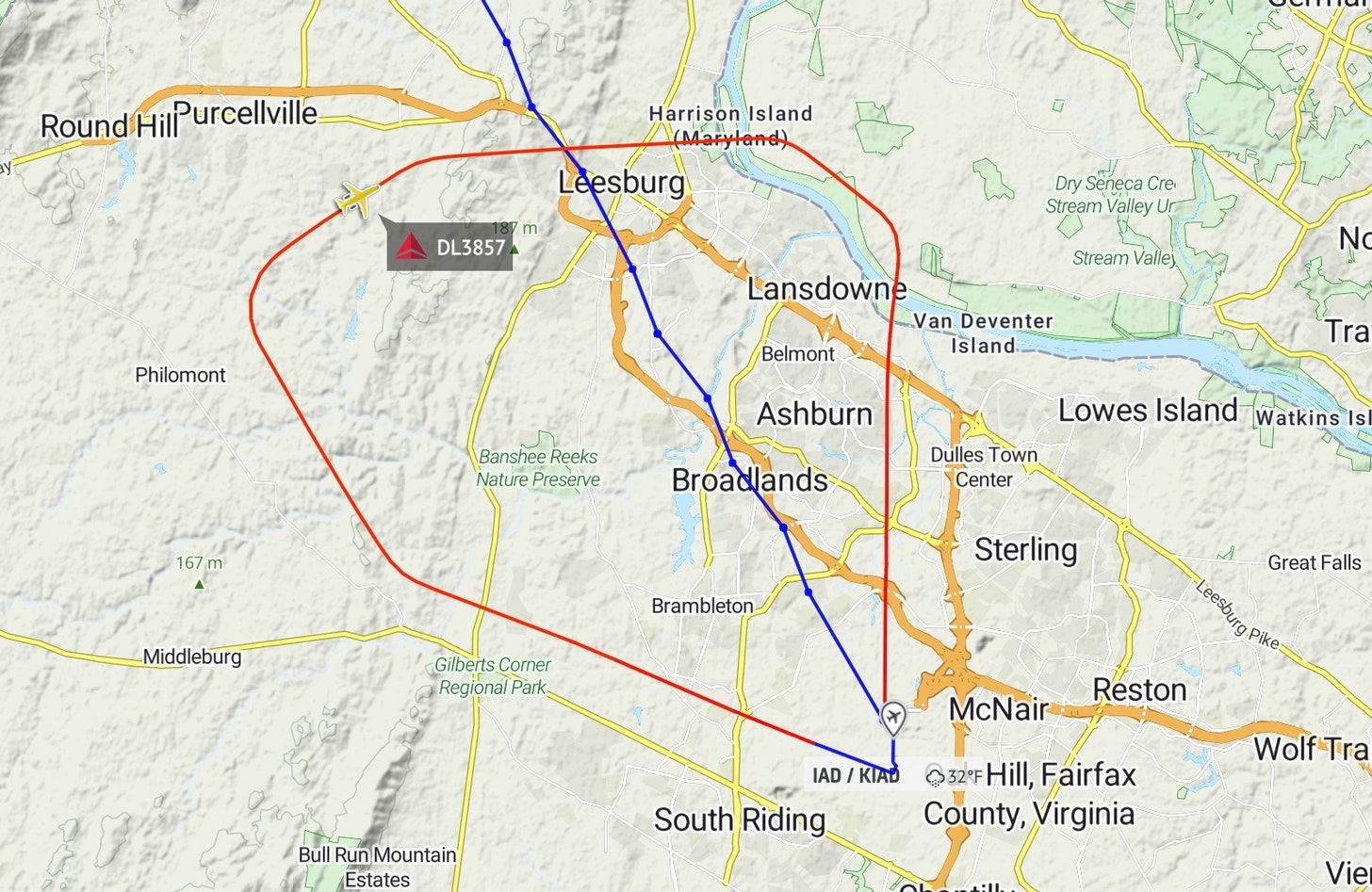Greetings from Holland, Michigan, where our long-announced American Futures project is making its debut.
That was the scene yesterday mid-afternoon at Montgomery County Airpark in Gaithersburg, Maryland (KGAI in aviation-talk), as we waited for the ceiling to get high enough for a comfortable albeit on-instruments departure.
To the right of the scene above, you see members of The Atlantic’s industry-leading video-production team, recording the beginning of the process. To their left, in black shorts and shirt, you see one half of The Atlantic’s traveling team for this project. The other half of the team was getting some food out of the car. Behind the people is the Cirrus SR-22 airplane in which we’ll make the journey.
Updated maps and local reports shortly. Here is how the same plane and member of the reporting crew looked on the other end, on the ground in Holland, with all the gear we’re traveling with for the next couple of weeks. (The skies directly over the Holland airport were almost clear.) Aviators will be glad to know that the plane — with a full load of gas, two occupants, and the luggage shown here — was still 80 pounds under the allowable takeoff weight.





